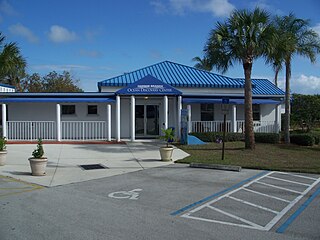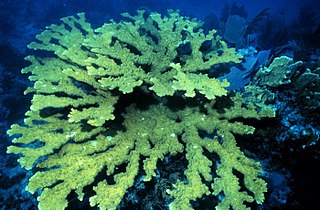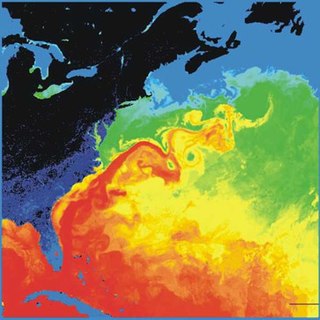
The Scripps Institution of Oceanography in La Jolla, California, founded in 1903, is one of the oldest and largest centers for ocean and Earth science research, public service, undergraduate and graduate training in the world. Hundreds of ocean and Earth scientists conduct research with the aid of oceanographic research vessels and shorebased laboratories. Its Old Scripps Building is a U.S. National Historic Landmark. SIO is a division of the University of California San Diego (UCSD). The public explorations center of the institution is the Birch Aquarium at Scripps. Since becoming part of the University of California in 1912, the institution has expanded its scope to include studies of the physics, chemistry, geology, biology, and climate of Earth.
The National Ocean Service (NOS), an office within the U.S. Department of Commerce National Oceanic and Atmospheric Administration (NOAA), is responsible for preserving and enhancing the nation's coastal resources and ecosystems along 95,000 miles (153,000 km) of shoreline bordering 3,500,000 square miles (9,100,000 km2) of coastal, Great Lakes, and ocean waters. Its mission is to "provide science-based solutions through collaborative partnerships to address evolving economic, environmental, and social pressures on our oceans and coasts." NOS works closely with many partner agencies to ensure that ocean and coastal areas are safe, healthy, and productive. National Ocean Service scientists, natural resource managers, and specialists ensure safe and efficient marine transportation, promote innovative solutions to protect coastal communities, and conserve marine and coastal places. NOS is a scientific and technical organization of 1,700 scientists, natural resource managers, and specialists in many different fields. NOS delivers a dynamic range of nationwide coastal and Great Lakes scientific, technical, and resource management services in support of safe, healthy, and productive oceans and coasts. NOS develops partnerships to integrate expertise and efforts across all levels of government and with other interests to protect, maintain, and sustain the viability of coastal communities, economies and ecosystems.
The Rosenstiel School of Marine and Atmospheric Science is an academic and research institution for the study of oceanography and the atmospheric sciences within the University of Miami (UM). It is located on a 16 acre campus on Virginia Key in Miami, Florida. It is the only subtropical applied and basic marine and atmospheric research institute in the continental United States.
Texas A&M College of Geosciences is a college of Texas A&M University located in College Station, Texas. The college has six academic departments and programs, including Atmospheric Sciences, Geography, Geology & Geophysics, Oceanography, Environmental Programs in Geosciences, and the Water Management & Hydrological Science (WMHS) Program. In addition, the College hosts three Research Centers and Institutes: https://web.archive.org/web/20080522012111/http://www-gerg.tamu.edu/ Geochemical & Environmental Research Group (GERG), Integrated Ocean Drilling Program (IODP), and Texas Sea Grant College Program.

Harbor Branch Oceanographic Institute at Florida Atlantic University, also commonly referred to as HBOI or HBOI at FAU, is a non-profit oceanographic institution operated by Florida Atlantic University in Fort Pierce, Florida, United States. HBOI traces its history to a 1971 entity which partnered with FAU in 2007.

The Marine Science Institute (MSI) is one of seven academic institutes of the University of the Philippines' College of Science. It is housed in its own building complex within the UP Diliman Campus in Quezon City. The Marine Science Institute offers MSc and PhD degrees in Marine Science. Students taking either degree are asked to choose to specialize in a specific field, either Marine Biology, Marine Physical Science or Marine Biotechnology. MSI is the leading center for marine and coastal research in the Philippines.

The College of Biological Sciences (CBS) is one of seven freshman-admitting colleges at the University of Minnesota. Established in 1869 as the College of Sciences, the College of Biological Sciences is now located on both the Minneapolis Campus and the St. Paul Campus. CBS is a college that focuses its undergraduate and graduate attention towards research. The dean is Valery E. Forbes. The Associate Dean for Graduate Education is Carrie Wilmot, the Associate Dean for Undergraduate Education is John Ward, the Associate Dean for Research is David Greenstein, and the Associate Dean for Faculty is Marlene Zuk.

Elkhorn coral is a prominent Caribbean reef-building coral, although current populations are still struggling to recover from white band disease outbreak. This species is structurally complex with many large branches. The coral structure resembles that of elk antlers. These branches create habitats for many other reef species, such as lobsters, parrot-fish, snapper shrimps and other reef fish. Elkhorn coral colonies are incredibly fast-growing, with an average growth rate of 5 to 10 cm per year and can eventually grow up to 3.7 m (12 ft) in diameter. The color of this coral species ranges from brown to a yellowish-brown as a result of the symbiotic zooxanthellae living inside the tissue of this coral species. Zooxanthellae are a type of algae which photosynthesize to provide the coral with nutrients. The zooxanthellae are also capable of removing waste products from the coral. Historically, the majority of elkhorn coral reproduction has occurred asexually; this occurs when a branch of the coral breaks off and attaches to the substrate, forming a new colony, known as fragmentation. The degree to which local stands reproduce by fragmentation varies across the Caribbean, but on average, 50% of colonies are the result of fragmentation rather than sexual reproduction. Sexual reproduction occurs once a year in August or September when coral colonies release millions of gametes by broadcast spawning.

The Hawai`i Institute of Marine Biology (HIMB) is a marine biology laboratory located on the state-owned Coconut Island in Kāne'ohe Bay.

Nancy Knowlton is a coral reef biologist and is the Smithsonian Institution’s Sant Chair for Marine Science.

Coral aquaculture, also known as coral farming or coral gardening, is the cultivation of corals for commercial purposes or coral reef restoration. Aquaculture is showing promise as a tool for restoring coral reefs, which are dying off around the world. The process protects young corals while they are most at risk of dying. Small corals are propagated in nurseries then replanted on the reef.
Organizations which currently undertake coral reef and atoll restoration projects using simple methods of plant propagation:
Caribbean Research and Management of Biodiversity Foundation is a research organization in Curaçao, former Netherlands Antilles. It is situated in Piscadera Bay, 25 metres (82 ft) from the Caribbean Sea. Its education and research programs include the ecological aspects of fisheries and coral reef sciences.
Silvia Maciá is an American marine biologist and professor of biology at Barry University in Miami Shores, FL. Courses she has taught include marine biology, oceanography, tropical marine ecosystems, ecology, environmental science and botany.
Alice Alldredge is an American oceanographer and marine biologist who studies marine snow, carbon cycling, microbes and plankton in the ecology of the ocean. She has conducted research in the open sea, at her laboratory at the University of California, Santa Barbara as well as in collaboration with the Long Term Ecological Research Network (LTER) at the Mo'orea Coral Reef Long Term Ecological Research Site in Mo'orea, French Polynesia. According to the annual ISI Web of Knowledge list published by Thomson Reuters, she has been one of the most cited scientific researchers since 2003.

Joseph Richard Pawlik is a marine biologist. He is the Frank Hawkins Kenan Distinguished Professor of Marine Biology in the Department of Biology and Marine Biology at the University of North Carolina Wilmington. He is best known for studies of sponges on Caribbean coral reefs that reveal ecological principles such as resource trade-offs, trophic cascades and indirect effects.

The Duke University Marine Laboratory is a research facility and campus of Duke University on Piver's Island, a private island, near Beaufort and the Outer Banks, North Carolina specializing in studying marine biology. It is part of the Nicholas School of the Environment's Division of Marine Science and Conservation.



















